How to Draw Reflections on Cars
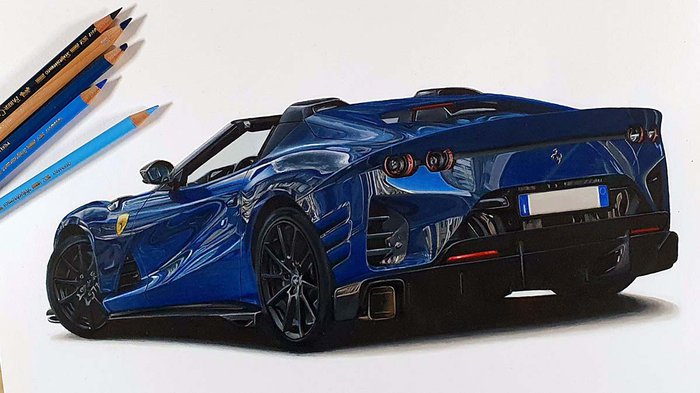
When I first started out drawing cars I didn't know cars had reflections, but all that changed when I first started using a reference photo for a drawing. Suddenly I became aware of all those beautiful reflections cars have.
Now, every time I draw a car, I carefully pick a reference photo specifically for the reflections I want the car I'm drawing to have. It's become one of the most important parts of my drawings.
In this guide, I'm going to show you how cars reflect light, how you can draw car reflections, what I look for when drawing car reflections, and how I draw them.
And if you want to know how to draw a full car, check out this step-by-step tutorial I made.
What Are Reflections on Cars?
Reflections on cars refer to the way light interacts when it hits the surface of the car.
The car's surface reflects its surroundings, like buildings, trees, the sky, etc. Those reflections can be very sharp and detailed like a clean mirror (specular) or fuzzy like a fogged-up mirror (diffuse) depending on the paint type of the car.
The Basics of Car Reflections
The Horizon Line
Cars often contain a horizon line that divides the reflections of the ground from the reflections of the sky.
Everything above the horizon line are reflections of the sky and everything below the horizon line are reflections of the ground and other surroundings.

The easiest example to show the horizon line is this Dodge Challenger. This car has a very distinct horizon line indicated by the blue line. Everything below is a reflection of the ground and everything above is a reflection of the sky which in this case is mostly clouds.
The reflection of the ground is typically lighter at the top and slowly transitions into a darker tone, with a darker part towards the top where there are often buildings or trees reflected.
The Car's Curvature and Body Lines
Reflections always follow the curvature and the body lines of the car. In the example above, the Dodge contains a distinct body line making it easy to determine where to draw the horizon line. You might have noticed that that isn't the case on the wheel arches.
The wheel arches are one round piece without any lines which makes it a bit tricky to determine where to draw the horizon line.
When looking at the photo you can see that the horizon line is a bit below the halfway point of the arches and that it curves downwards.
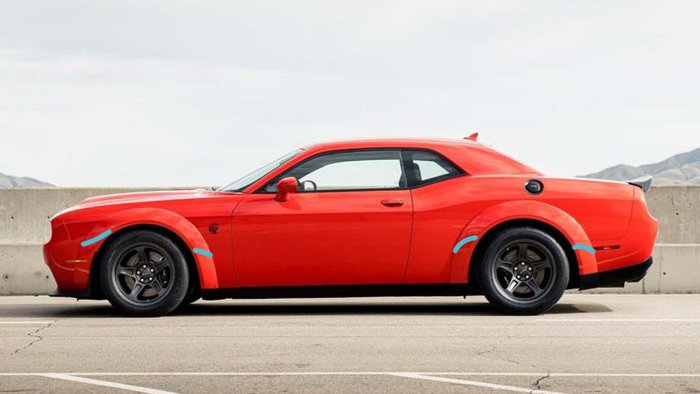
Another thing you might have noticed when looking at the Dodge is that the clouds it reflects are all a bit squished in the length of the car. This is because all reflections follow the curvature of the car and in this case, the body (especially the part right above the horizon line) is slightly curved outwards distorting the reflections and making them look squished.
Reflections of Body Parts
Sometimes cars reflect parts of their body. For example, the Dodge Challenger we've used as an example has a reflection of its mirror right below the mirror itself.
Another example is this drawing I made of a Bugatti Chiron. In this drawing, you can see that the body reflects a big part of the inside of the C-shape.
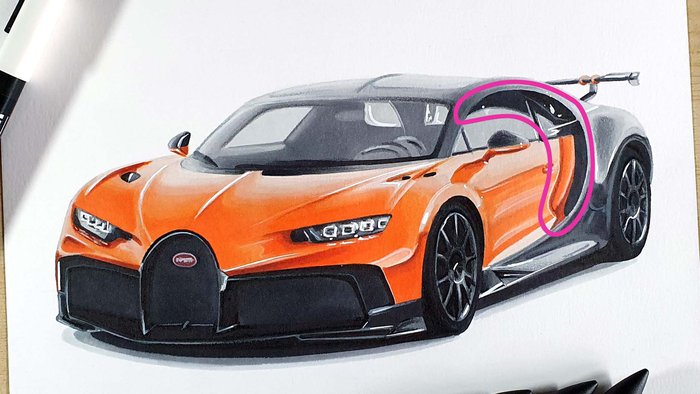
Reflections on Cars with Curves
In the examples above we've looked at a car that has very distinct edges and simple shapes.
Reflections on cars like these are easier to draw as they are very predictable, but most cars aren't like this.
Most cars have a more complex design (reflection-wise) with more curves, like the Porsche 911.
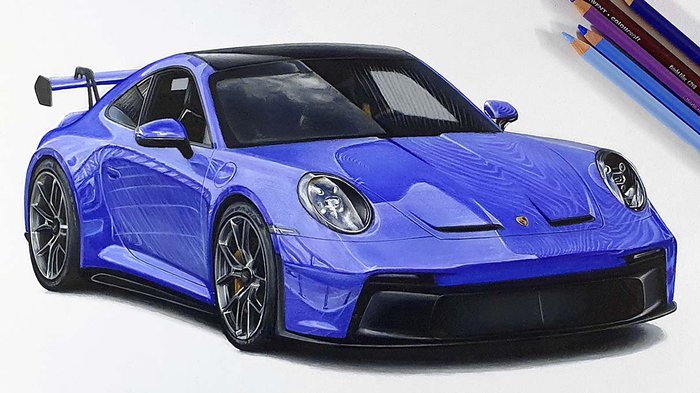
This Porsche 992 GT3 I drew contains mostly curves flowing into each other. With a car with such a curvy body, it's more difficult to predict how the reflections look and where to draw the horizon line.
When looking at this Porsche you'll notice that the horizon line is mostly straight, but at each end where the wheel arches are it curves downwards and then a bit upwards again. This is because, just like the Dodge, the wheel arches curve out a bit. But unlike the Dodge, the wheel arches of the Porsche are smoothly integrated into the rest of the body making the horizon line one smooth line.
Different Paint Types
There are 3 different paint types (Metallic, flat/glossy, and matte) and they all reflect differently.

Metallic paint has the sharpest and deepest reflections of the 3.
Cars with metallic paint reflect their surroundings like a mirror. The reflections are clear and very detailed and they contain a lot of contrast.
Cars with a flat/glossy paint finish reflect the surroundings also clearly, but the reflections are less detailed and less contrasty.
Cars with a matte finish have very diffused reflections. They look very fuzzy and blended together and there is not that much contrast between the light and dark tones.
Different Weather Conditions
The weather conditions play a big part in how the reflections will look.
Sunny Weather
On sunny days, cars often have deeper reflections compared to more gloomy days, meaning that there is more contrast between the darks and the lights. During sunny weather cars also often have a few very bright white reflections where the sun is directly hitting the surface. Some car colors also might reflect a bit of the blue sky when the sun's out.

Overcast
When there's a lot of cloud cover the reflections will look less deep (less contrast between light and dark tones) compared to sunny weather. And sometimes you might see some outlines of clouds reflected in the paint of the car.
During cloudy weather, cars often have very clean and basic reflections, especially when there are barely any surroundings.
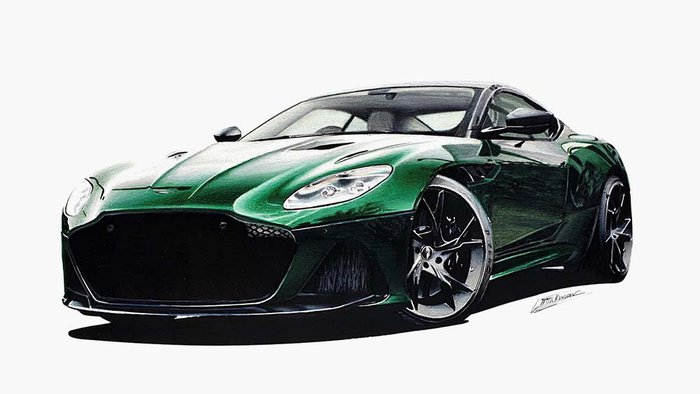
Sunset and Sunrise
This is probably my favorite condition to draw a car in (I really should draw more cars during sunset), but it's also the most difficult I think.
During sunset or sunrise, cars will reflect a lot of the yellow-orange color of the sunlight. This is generally an area just above the horizon line on the side of the sunset or sunrise.
The part of the car that's closest to the sunset or sunrise often also has an orangy glaze over it.
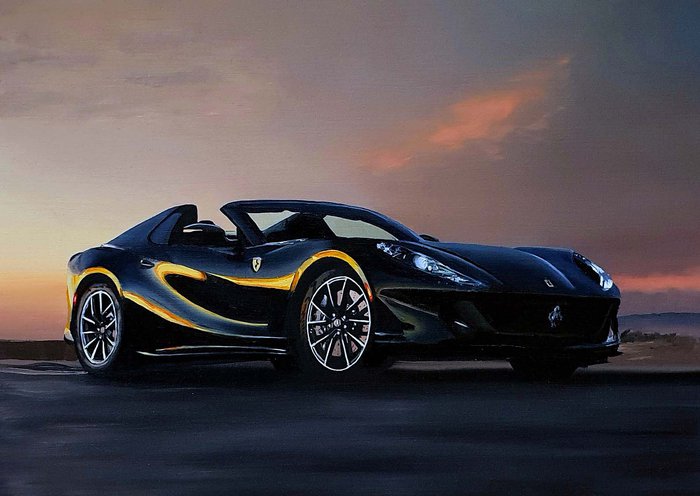
Use a Reference When Drawing Reflections
Making up with reflections when drawing cars can be very difficult, that's why I always use at least one reference photo.
Even though almost anything goes when drawing reflections it can be difficult to make them look realistic and to predict where they will be. That's why you should always use one. But don't feel like you need to stick 100% to it. Just do whatever feels right and most of the time it'll also look right.
What Do I Look for in Reference Photos for Reflections?
When looking for a reference photo I always make sure that the paint type in the photo is the same as the paint type I want to draw.
Too often now I've made the mistake of choosing a photo of a car with a different paint type and accidentally drawing the reflections in the paint type of the photo instead of the paint type I wanted to draw... Also converting one paint type to another in your head is more difficult than it seems.
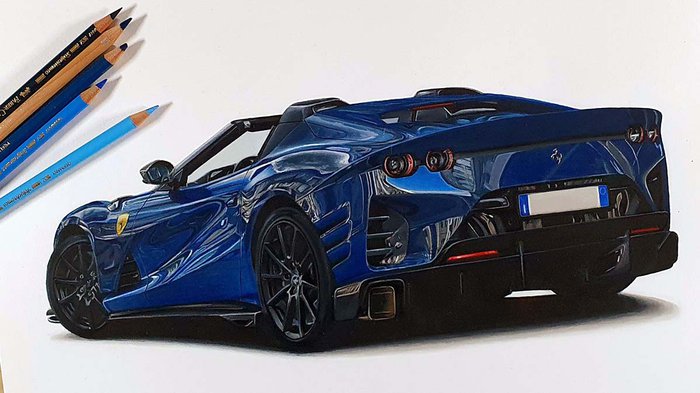
Another thing I look for when choosing a reference is that it has lots of interesting reflections like a sunset, a few buildings, some clouds, etc. as long as there are at least a few interesting reflections that make it stand out.
I try to avoid cars with barely any reflections where they just reflect a perfectly clear sky, no surroundings, and plain ground. I've made that mistake once and I will not make it again.

I also like it when there's a bit of contrast between the lights and the darks in the reflections and I avoid photos where the car has big white reflections of the sky.
These are just my preferences, you can do anything you like. There isn't really a wrong or right when it comes to reflections.
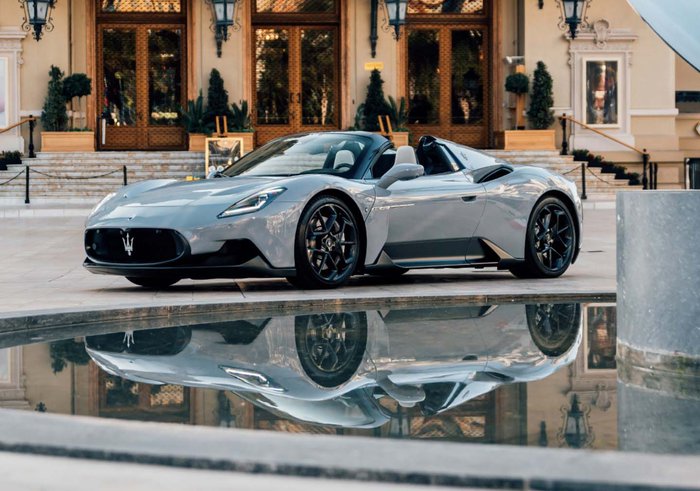
The White Paint Marker will be Your Friend
White paint pens are great for adding those pure white reflections when your drawing is almost done. They really make the drawing come to life.
A while back I made a few drawings where I barely used my white paint marker, but now looking back at them I wish I had used it more to accentuate the reflections... And for some reason, it doesn't feel right adding something to a drawing I already declared finished...
Just add a few highlights to your drawing and it'll look better and be careful to not overdo it.
If you want to know how I draw cars, including their reflections, check out these step-by-step tutorials I made of a Porsche 992 GT3 RS and a Lamborghini Aventador SVJ.
Thank you so much for reading! Let me know if you found this helpful and if there are things I should explain more/better.
Hope you have a nice day!

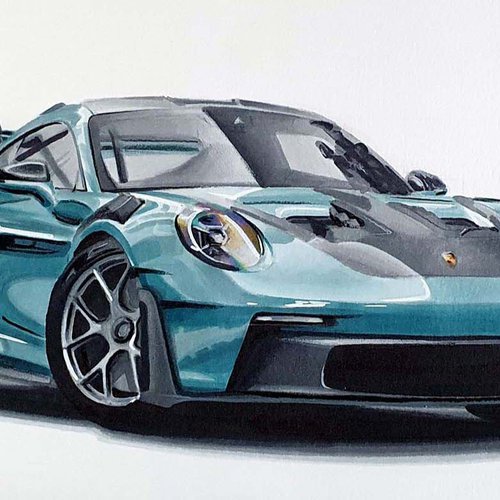



Be the first to comment!
Comments
There are no comments yet.